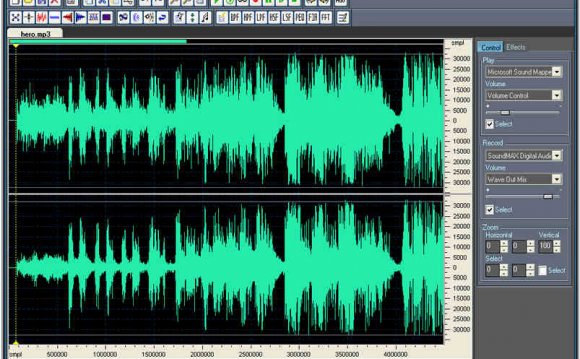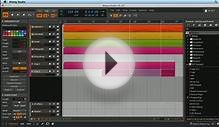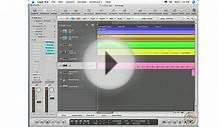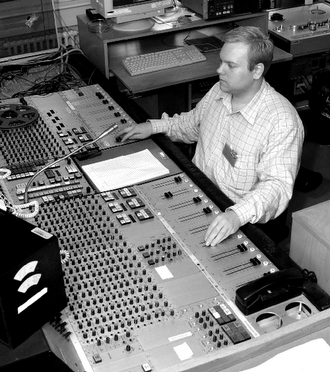
Greetings! Andrew the Audio Researcher here, back with increased advice for ACX producers. Today, I present the 2nd part within my four-week video series, How you can Succeed at Audio book Production. A week ago, I introduced The ACX Mile and covered guidelines for that preparation and recording of the audio book productions. Now, I’ll address editing your raw audio book tracks.
Editing and QC
Prior to getting towards the video below, I wish to help remind you from the answer to creating dependably great sounding audio books: consistency. Creating a regular you can go back to repeatedly will pave the way for success within the later stages of the productions and lead to top quality final audio.
Editing an audio book is often as demanding an activity as recording one, but optimizing your editing practices can help reduce the workload. Let’s watch part a couple of How you can Succeed at Audio book Production, after, evaluate the editing tips I would recommend below.
Editing Breakdown
Audio book editing is divided into two phases: a sound editing stage, then a QC stage.
Audio editing involves:
- Elimination of extraneous and annoying noises in the audio.
- Modifying the pacing from the narration.
- Observing errors which might necessitate a re-record.
The QC involves:
- Listening car audio book again to verify the standard from the narration and also the completing the information.
- Marking and verifying all errors recognized as necessitating a re-record
- Developing a QC packet to arrange all errors.
- Re-recording the phrases requiring improvement and placing these new tracks in to the edited audio.
Fundamental Editing Strategies for Effective Audio book Production
Mark your audio recordings – While recording narration, I suggest you convey a marker at the outset of each section or chapter of the audio book inside your DAW. This really is useful in verifying the conclusion from the tracks, as well as gives a great reference point to make use of within the QC stage from the editing process. While editing, place markers whatsoever errors you’ve recognized as needing a re-record from the phrase/section under consideration. This will make the QC stage much simpler. Get more information at an example QC sheet that will help you note errors inside your recording.
Always employ earphones – Editing spoken word audio requires a great pair of earphones. In last week’s publish, I alluded that most audio book productions only contain two sounds: your voice, as well as your recording space. Annoying clicks, chair squeaks, along with other exterior noises tend to be more easily heard in audio books simply because they have nowhere to cover. These sounds can limit the listener’s immersion in to the story, and therefore diminish the listening experience. Fortunately, professional earphones tend to be more affordable than in the past. Browse the entry on earphones within the ACX Studio Gear series for recommendations.
Clean room tone is essential – Changing gaps of silence with room tone is important to some well-created audio book. Based on your narration style and editing technique, you may even desire to use room tone to change the pacing of the read – a highly effective way of enhancing the clearness of the narration without requiring to re-record the passage. However, when the room tone you’re using to do this consists of noise of their own, then your entire editing process could be for naught. Make sure to listen to your living space tone in a high volume before editing it to your production to make sure it is sufficiently quiet.
Never be afraid to crank the amount – Since you haven't mastered your audio book yet, the dynamic selection of your recording may need you to ride the level of your earphone output. This really is OK! You need to ensure every part of audio is obvious enough to discern the clicks and extraneous noises which are contained inside the recording. Learning brings up the level of your recording substantially, including all sounds not caught throughout the edit stage. When they aren’t removed at this time from the production process, individuals noises will show significant difficulties afterwards.
Be conscious of your energy – Experienced audio book editors spend roughly three hrs editing every hour of raw recorded audio. Additionally, the QC process involves listening to the whole book again. This translates to roughly 4 hrs of labor each hour of not-edited audio. If you're breezing through edits in a much faster pace, then you might want to provide your audio another pass. Audio books are extended productions, so it’s inside your production’s needs to become thorough. However, when you are worrying with one problem, you might want to measure the level and return into it later. Individuals have a inclination to become harder on themselves when they’re editing their very own voice tracks, therefore it might be better to move away from the problem for some time and revisit it later. The point is, when you are investing greater than a minute on a single problem together with your audio, it might be better to simply re-record the road rather.
RELATED VIDEO




 An audio engineer, also called audio technician, audio technologist, recording engineer, sound engineer, sound operator, or sound technician, is a specialist in a skilled trade that deals with the use of machinery and equipment for the recording, mixing and...
An audio engineer, also called audio technician, audio technologist, recording engineer, sound engineer, sound operator, or sound technician, is a specialist in a skilled trade that deals with the use of machinery and equipment for the recording, mixing and...
 Editing is the process of selecting and preparing written, visual, audible, and film media used to convey information through the processes of correction, condensation, organization, and other modifications performed with an intention of producing a correct...
Editing is the process of selecting and preparing written, visual, audible, and film media used to convey information through the processes of correction, condensation, organization, and other modifications performed with an intention of producing a correct...








